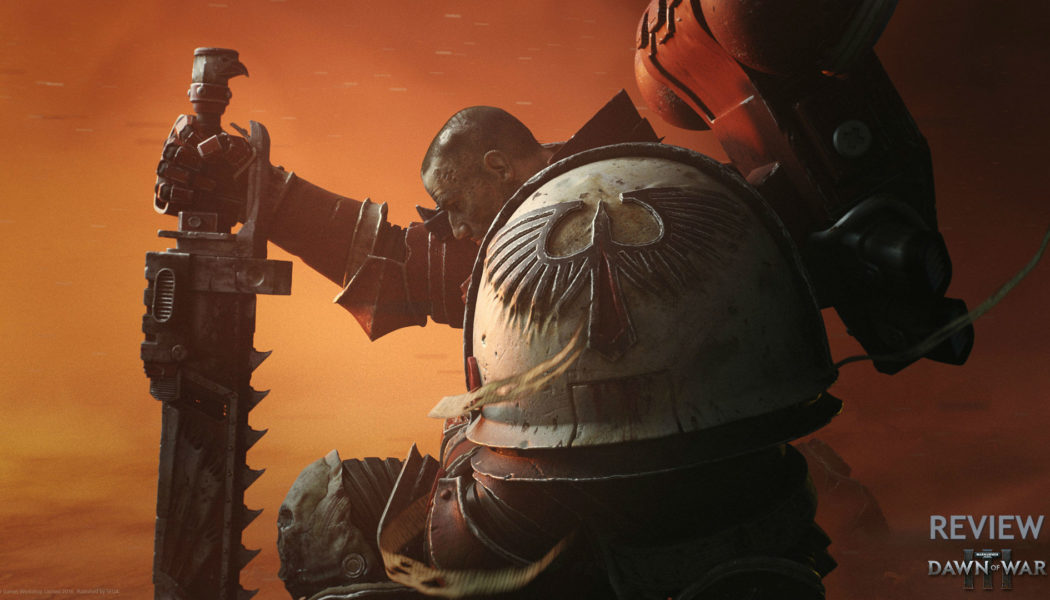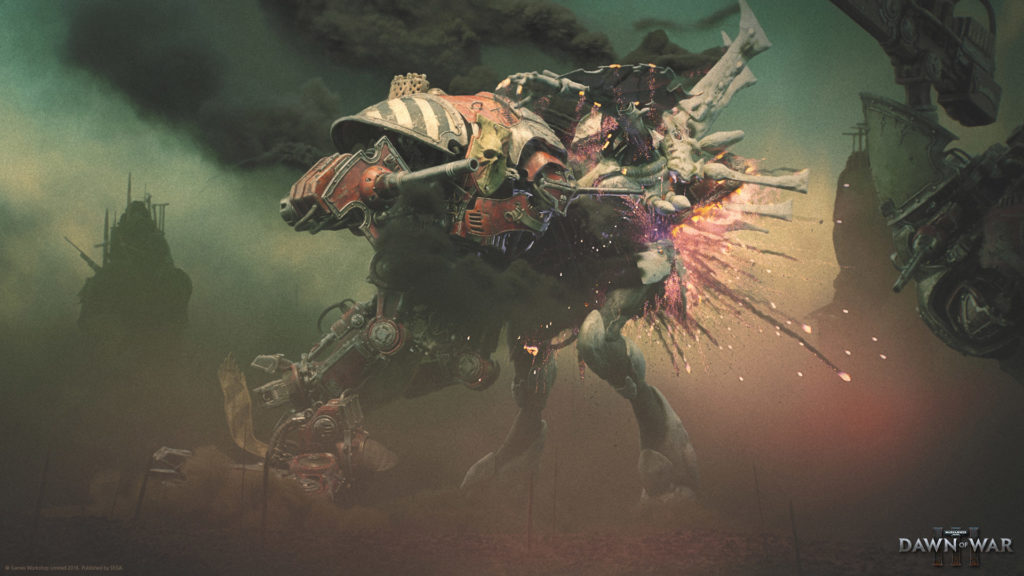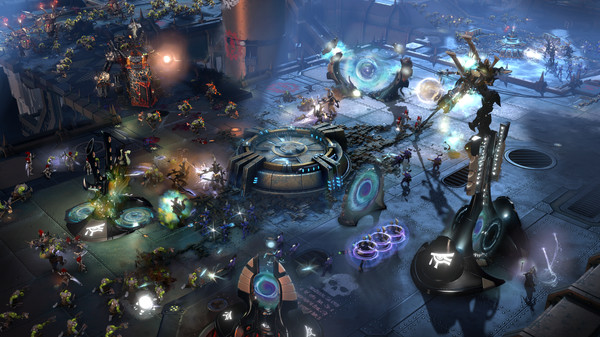The original Dawn of War, launched back in 2004 was a good old-fashioned RTS. Dawn of War 2, decided to shake things up a bit, leaving behind some of the traditional RTS mechanics in the favour of focused battles comprising of fewer but more powerful units. And in 2017, we have Dawn of War 3, which in my humble opinion can be best described as a little bit of both. While this brings some new things to the table, it’s not all for the better.
Now, there’s plenty to love about Dawn of War III. It looks good, the key elements focusing of squad and base-building are back and the battles are a bloody chaotic mess. It all looks and feels spectacular. You might want to brush up your Warhammer 40K basics (just for background’s sake), but even if you don’t, the tutorial does a pretty good job of bringing you up to speed with the different types of units and mechanics. There are three factions in the game, and the single-player campaign allows you to play as each of them. There are Space Marines, your soldiers who are pretty much straightforward, with their arsenal of guns and swords. Then you have the Orcs, who can upgrade themselves using the crap from destroyed buildings. And lastly, there are the Eldar, agile and lean, who are capable of teleporting base structures across the map. Each faction is distinct and creative, and the game demonstrates that beautifully.
A key element in Dawn of War III is the Elites, who can turn the tide of the battle with their devastating abilities. Think of these as a Hero unit in a MOBA. And they are immensely fun to play around with. Imagine walking a humongous armour-clad giant hammer-wielding warrior into a crowd of enemies, and setting him loose to wreak havoc. Needless to say, chaos ensues as enemy units are sent flying around with each swing of the hammer, the battlefield painted with their blood. For everything that sucks about the game, just the spectacle of this one element is awe-inspiring. It brings a smile on my face every time I try it. Yeah, I may need to see a shrink in the near future.
The single-player campaign consists of 17 missions, which are fairly long, so there’s no lack of content. However, the focus and creativity that’s gone towards bringing out the distinctions in the factions seems to be undermined by the story. Some of the missions feel more or less like tutorials, where you’re forced along fixed paths, offering very little in terms of strategic choices. Normally, you play one or two missions as one faction before the story jumps and puts you in the shoes of another. It doesn’t give you enough time with one faction to get you interested, and before you know it, you’re on to the next one.
Dawn of War III successfully captures the dark tone of the Warhammer 40K universe, and creates a nice balance, keeping the game fun against a grim setting. But then again, the story feels shallow and fails to do justice to the grand spectacle that is the universe. The importance of Elites means that rather than a traditional RTS, the game is a blend of both RTS and MOBA elements. Your Elite unit has amazing abilities, but they come with a cooldown. And while the abilities recharge, you need to make sure your grunt units are doing their job and not getting slaughtered by the enemy..Think DOTA 2 or LOL, where your grunts are creeps and Elites are the Heroes, one key difference being you have to control the creeps as well.
While I like to play RTS games mainly for their single-player campaigns, this is one game where one can say that the multiplayer is better. The single-player, on the other hand, feels like a long tutorial that gets you ready for the multiplayer. Maps can be complex, requiring you to build solid defences on multiple sides, while making sure you have an adequate attack force to tackle your foes. Here, the differences in how the three factions function shine brightly and you can experiment with different units and strategies. And trust me, there’s plenty of experimentation to go around. For instance, the Space Marines sort of function the way we’re used to, you select and build things normally. The Orcs have the ability to create and upgrade stuff using scraps from dead enemies/buildings, allowing them to construct a building or a weapon right there on the spot. And the Eldar are completely different story altogether. The ability to teleport base structures means they don’t need to construct buildings from scratch in a new location. Additionally, they have shields on most of the units, and focus on speed tactics rather than brute force. Between each faction’s play style and Elites, there are multiple ways you can choose to approach your enemies
There are a lot of things about the multiplayer too that set the game apart from a traditional RTS. During the initial phase of the match, unit deaths and losses give players refunds for resources, taking away some of the focus from resource gathering and directing it towards combat right off the bat. As the match progresses, these refunds start decreasing and players need to start (micro)managing more effectively. Acquiring resources require you to control certain points on the map and erect extractors, which are quite delicate. This adds another layer to the gameplay, as it’s possible to starve your enemy by destroying their structures and cutting off the resource supply.
The Elites are really fun for fans of carnage, but they make handling smaller units a chore. I mean, why would I want to throw 10 pesky little ants in the fight when I have a God walking on the field? Alas, the abilities need to recharge, which means you’ll be spending plenty of time moving your grunts around, doing grunt stuff. The game doesn’t do a good enough job to balance both, which is a shame.
The Verdict
There are a lot of crappy Warhammer 40K games out there, but the way Relic has crafted Dawn of War III deserves respect. It stays true to the universe it’s based upon, and adds enough personality to make it a worthy game. However, trying to blend elements from both Dawn of War and Dawn of War 2, it creates a fun but ultimately disappointing mixture of RTS and MOBA. There’s a lot of complexity in terms of mechanics and a steep learning curve, but all that falls flat once you realize that the campaign is barely more than a skeleton for the multiplayer. Nevertheless, nothing beats the satisfaction of trampling your enemies with your mega-warrior, and that is one thing Dawn of War III demonstrates beautifully.
Register with us for the best in gaming, and join us for video game discussions on our forums.








